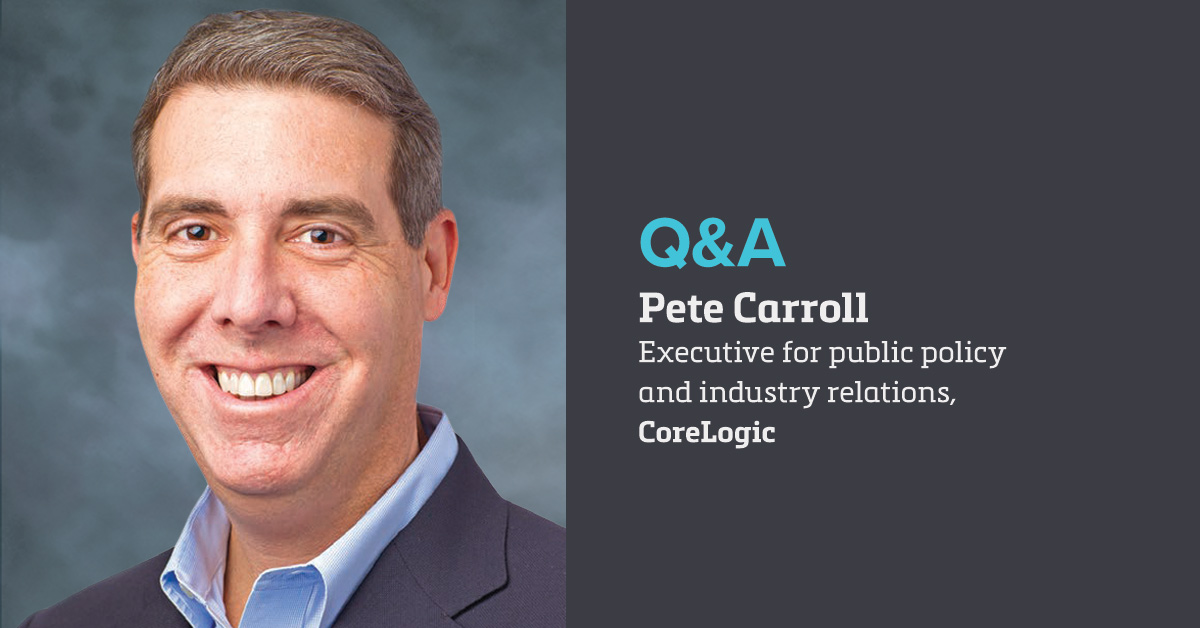The U.S. is not only building too few homes, but the country is building too few homes that are affordable for the people who need them. This housing-supply gap is not just about people on the lower economic rungs. It’s felt at every income level.
Pete Carroll, executive of public policy and industry relations at CoreLogic, took a look at the affordable-housing crisis and supply gap in a series of online videos. The challenge to meet these needs varies from community to community. A wide number of policy fixes at the federal, state and community levels are needed to address the problem. Carroll spoke to Scotsman Guide about the size of the challenge and what can be done.
You see housing affordability as a crisis, right?
I do indeed. We’ve had a persistent gap or deficit in the number of new units, particularly single-family starter homes, that are needed to keep pace with household formation and demand. The numbers are becoming somewhat stark. By our calculations, by the end of next year, we’ll be looking at a 4.35-million-unit gap.
People earning 50% or less of area median income is a large portion of this gap — about 2.6 million units. Some will argue that is just an undersupply that we need to fill. Some will argue that’s a combination of undersupply and housing burden, where people are spending 30% or more of their gross income on housing.
When we move into the next segment, low to moderate income, that gap is 1.1 million units. They have better-quality communities offering better opportunity for economic mobility, but they’re still not wealthy communities. Market forces favor renting over homeownership. There are subsidy programs that have been very effective for rental properties, like a low-income housing tax credit, but we’re missing an equivalent on the homeownership side.
What are you seeing at the upper income levels?
Even in what we would describe as the economically advantaged segment, which is people who have greater than 120% of the area median income, there’s still a gap. It’s about 650,000 units. It’s just very interesting that you see these gaps up and down the spectrum.
At the end of the day, it’s a very local problem.
It seems like housing, or the lack of it, is one of the biggest issues facing the country.
It really does feel that way. From my vantage point, there’s certainly a lot of efforts on trying to think about how to add additional housing stock. When you try to talk about that at the federal level, it becomes very complicated, right?
We’ve got 8,000 municipalities or different local authorities that oversee that type of decisionmaking about what can get built and where it can get built. There’s only so much the federal government can do. They can create funding, subsidies, tax credits and grants, but at the end of the day, it’s a very local problem.
What should be done?
From our perspective, this is [about how to] roll up the sleeves, get in the grassroots, get in the trenches. It doesn’t do much good to complain about the term NIMBYism (people opposed to development near their homes) because it’s going to be there. You have to engage at the local level. You have to do it with facts. You have to do it with an open mind and with listening.
Are there patterns you’re seeing across regions?
If I’m a land developer and I have an idea for a new entry-level subdivision, the cycle time can be very long from figuring out what I want to build, where I want to build it and how I’m going to get the buy-in from all the people who can make or break my approval, and then put the shovel into the dirt. When that cycle time is long, that means I’m constrained in how many projects I can do in a year. If we could cut that cycle time in half or more, you can potentially double the capacity of a land developer. If you can do that, then now we can start to really see the needle move.
Do you think the affordability issue is getting the attention that it merits?
I think it is starting to. There are many, many housing bills floating around Congress. Of course, President Biden has put out his jobs plan that includes a huge housing component to it. The challenge will be not only to get these programs passed in legislation but to create the operational precondition so that the money has a place to go. We’ve really been focused with some of our pilot work into how you get down into the grassroots level where this stuff really happens. ●







